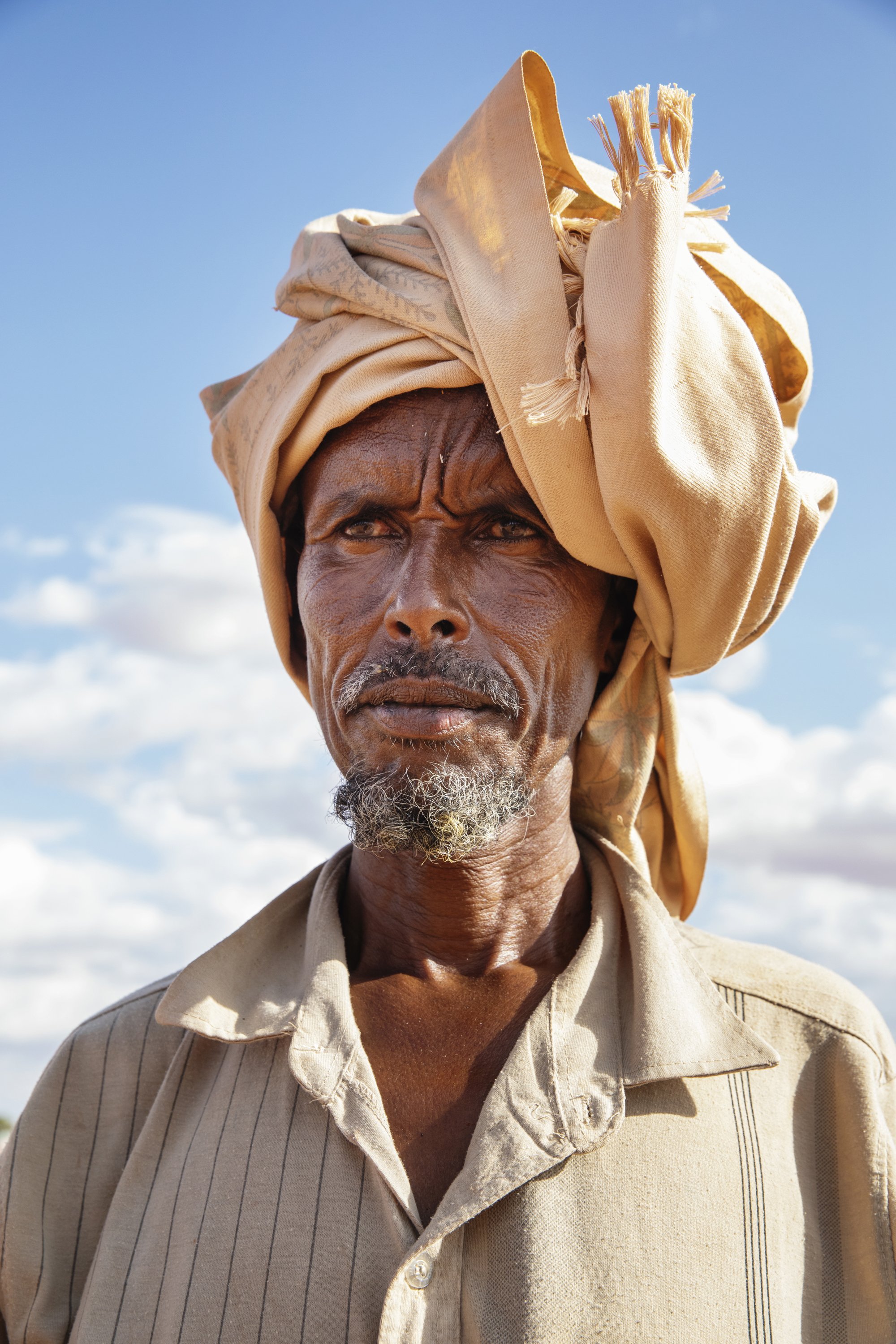
Somalia is facing its worst drought in decades and is feeling the price of grain and food skyrocket due to the war in Ukraine, and climate change, leaving almost half of the country’s population experiencing acute food shortages. As a result, 7 million people are staring at the growing threat of famine.
1.4 million children are severely malnourished, and 330,000 of those are expected to die if they don’t receive immediate help. One-third of the livestock has died since mid-2021.
Behind the numbers are always people and stories of survival. From cities like Mogadishu to places like the southern region of Gedo, we met families displaced by hunger with severely malnourished children, hoping in their displacement to find some sustainable way of living.
Full story written by Abdi Latif can be read on the New York Times homepage.
Fatuma Yusuf, a severely malnourished child, was being taken care of last month at the stabilization center at the Benadir Hospital in Mogadishu.
Maryam Feisal, a severely malnourished child who also contracted measles, with her mother, Mulki Abdulkadir, last month at the pediatric stabilization center at the Benadir Hospital in Mogadishu.
Adan Diyad and his 4-year-old son Zakariya. After having to abandon his crops, Diyad settled at a crowded camp for displaced people with his wife and children, where they didn’t have a toilet or enough clean water. Without a job, Diyad could not feed his family. Zakariya, usually chirpy, became emaciated.
Newly-arrived internally displaced persons building makeshift shelters at the Kaharey Internally Displacement Settlement in Doolow town in the southern Gedo region. Photographed in Doolow, Somalia on May 8th, 2022.
Hirsiyo Mohamed left her home in southwestern Somalia, carrying and coaxing three of her eight children on the long walk across a bare and dusty landscape in temperatures as high as 100 degrees.
Along the way, her 3-year-old son, Adan, tugged at her robe, begging for food and water. But there was none to give, she said. “We buried him and kept walking.”
With no water or pasture, rural communities have been hit the hardest in the drought that has continued to blanket Somalia. The Food and Agriculture Organization estimates that rural families have lost up to 30 percent of their animals to the drought.
Dead sheep in the outskirts of Doolow town in the southern Gedo region of Somalia. An estimated three million animals have died in the past year.
Muslima Hassan Hussein, a severely-acute malnourished child, with her grandmother at their home in Doolow town in the southern Gedo region of Somalia. The family left Wajid town in the southern region of Bakool due to conflict and their farms drying up because of lack rains.
Adan Abdi Isaac at Kaharey IDP camp in Doolow town. Mr. Isaac had come to the camp with his five children and wife after all his livestock died during the drought. “We have no brothers or family here. We just came here in the hope that an aid agency will help us,” said Mr. Isaac.
The Mid-Upper Arm Circumference tape, or MUAC, is meant to measure malnutrition. The red in the tap refers to severe acute malnutrition while the yellow strip shows moderate acute malnutrition. The green part would show no acute malnutrition.
Maryam Sheikh Yusuf and her niece, Fartun Adan Sheikh Yusuf, at their home in Waberi District in the Somali capital, Mogadishu. The hike in food prices, caused by the failure of crops and the war in Ukraine, had impacted their daily diet and ability to make some of their favorite dishes, including the beloved samosas during the holy month of Ramadan.
Daud at his shop in Doolow town. He spoke about how the delay in supply chains, growing prices and dropping foreign exchanges — he brings most of his goods from Ethiopia — have all contributed to the rise in prices of food and consumer goods.

Hawo Mohamed Hussein, a severly malnourished 1-year-old, with her mother, Habiba Ali Adam, at a health facility in Doolow, in the southern Gedo region. Ms. Adam said they left their home after their goats died from the drought.















